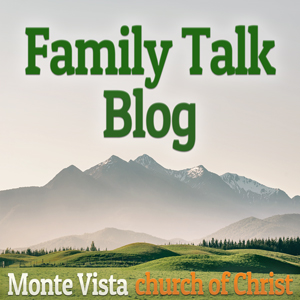“All Scripture is given by inspiration of God, and is profitable for doctrine, for reproof, for correction, for instruction in righteousness, that the man of God may be complete, thoroughly equipped for every good work” (2 Timothy 3:16-17).
The Bible is the most attacked book in the world. Why? Because if it is true, then that means we must believe and do what it says. That means that Jesus is the Son of God, and we are obligated to submit to His teachings (John 3:16; 12:48). That means that we are all lost sinners who need the gift of salvation (Romans 3:23; 6:23). That means that heaven and hell are real, and we will exist in eternity in one of those places (John 14:1-6; Mark 9:43-50).
Many people refuse to believe that the Bible is the word of God. Some question the reliability of the scriptures. In many cases, people do not have good arguments to back up their claims (most parrot what they have heard from others). One of the main arguments used to attack the Bible is: “How can we trust the Bible if we don’t have any of the original documents? How can we trust that people have not tampered with and changed the message of the Bible as it was translated through the years?”
While it is true that we do not have any of the original writings of the Bible, what we do have is far more valuable. We have thousands and thousands of copies (commonly referred to as “manuscripts”). Consider a few essential facts that we need to know about the New Testament manuscripts:
- First, manuscripts are copies of an original. The original is called the “autograph.” All literature from the ancient world is constructed to its original form by comparing the number of copies that survived. Having a large number of copies of the original will ensure that we have a more trustworthy document of what the author intended us to have.
- Second, there are about 5,700 Greek manuscripts. We have more New Testament manuscripts than the ten best pieces of classical literature combined. That is staggering!
- Third, there are about 25,000 manuscripts in a variety of languages like Latin, Coptic, Syriac, and Arabic. Some are complete Bibles, others are books or pages, and some are fragments. This is important to note because it shows that these documents were being circulated and written in other languages as the centuries progressed. Therefore, we can go back and compare the Greek manuscripts to ensure we have what God intended.
- Fourth, the New Testament manuscripts were written early after the originals. Consider the example of John Ryland’s fragment. It is called this because it is housed in the John Ryland Library in Manchester, England. On this fragment is John 18:31-33 and John 18:37-38. Some have dated this fragment to be written between 117-138 AD (some even date it as early as 100 AD!). It was found in Egypt while the original was probably written in Asia Minor. This is extraordinary because it shows us that the gospel of John was being copied and circulated soon after the original was made (many scholars consider the gospel of John to have been written sometime towards the end of the first century).
- But someone says, “What about all the errors found when comparing the copies?” A better word to use is “variations.” There are indeed several “variations” within all the manuscripts (some suggest there may be about 200,000), but that shouldn’t cause us to worry. Scholars have determined that the majority of variations in the manuscripts have to do with spelling and punctuation. None of them affect any doctrine of the Christian faith.
What’s the point? We can be confident that what we have today precisely what God intended! But it is not enough to believe that the Bible is indeed God’s word. We also have to read and do what it says (James 1:22-25).
And so, the challenge for the week is this: set aside at least 30 minutes each day to read your Bible (that is no longer than the average TV sitcom). In that time, you could read three or four chapters from Proverbs and get wisdom. A few Psalms and receive encouragement. A couple of chapters from the gospels and learn more about your Savior. Or the entire book of Philippians and learn about the joy that comes with being a Christian.
While you read, keep a highlighter or pencil in your hand and underline all of the things that stand out to you and help you in your faith. Pray about those things. Meditate and let them soak in your heart. Doing these things will only help you draw closer to God and become more like Jesus. Do you love God’s word enough to take on this challenge?
